The Raincross Gazette is on Holiday Break
The Gazette's 2-person newsroom is on a publishing break through holidays. Regular publishing will resume on Monday, January 5, 2026.
Built in 1907 and rebuilt in 1932, the Buena Vista Bridge connected travelers to Mt. Rubidoux and remains a city landmark nearly a century later.

Good View, or in Spanish Buena Vista, is the name of a short segment of road that curves around the northern edge of Mt. Rubidoux, connecting Seventh Street (now Mission Inn Avenue) to Mission Boulevard across the Santa Ana River in Jurupa Valley. No one seems to know why this segment was named Buena Vista Avenue (sometimes referred to as Drive). Was it for the good view of Mt. Rubidoux on one side and Little Rubidoux on the other? Or was it the view as travelers crossed the Santa Ana River and entered Riverside? Buena Vista begins at the end of Seventh Street, near today’s Afron Way (Rose Way on early maps), and extends to the river.
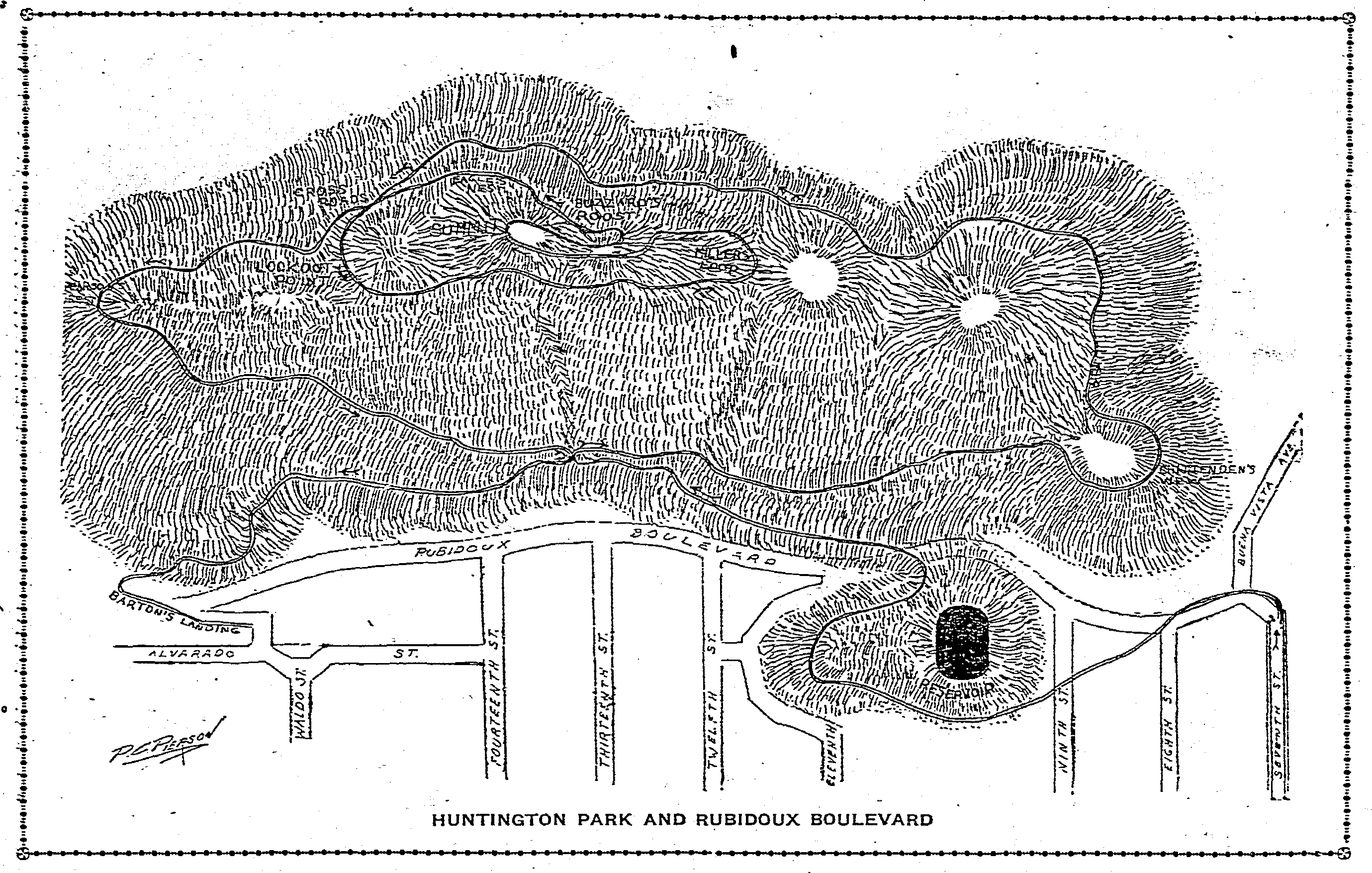

From left to right: 1905 map showing Buena Vista Ave. (Riverside Enterprise, September 2, 1906), 1917 map showing road over Buena Vista Ave. (Local History Archives at Riverside Main Library)
As Frank Miller, part of the Huntington Park Association, developed Mt. Rubidoux, he hired Hiram Chittenden of the Army Corps of Engineers to design a road up and down the mountain for tourists. As travelers left the Mission Inn and drove up Seventh Street, they had to connect to the road, Huntington Drive, that was being built. They did this via an incline at the end of Seventh Street, which bent to the left and crossed over Buena Vista Avenue. The bridge over the road was designed by Arthur Benton, architect of the Mission Inn. His original plans called for only the roadway, but he revised them to include a pedestrian walkway on one side.
As the road was built beginning in mid-1906 on the mountain, rocks blasted away were used to line the sides of the road as a guard wall and to construct the bridge over Buena Vista Avenue. Gunnar Kjellburg, the foreman for much of the roadwork, was an interesting early Riversider (a subject for a follow-up article). A newspaper of the day reported that the bridge was to be named Loring Bridge, as it connected Loring’s property on the north side of Buena Vista Avenue to the base of Mt. Rubidoux. However, that name never caught on, and instead the bridge became known as the Buena Vista Bridge.
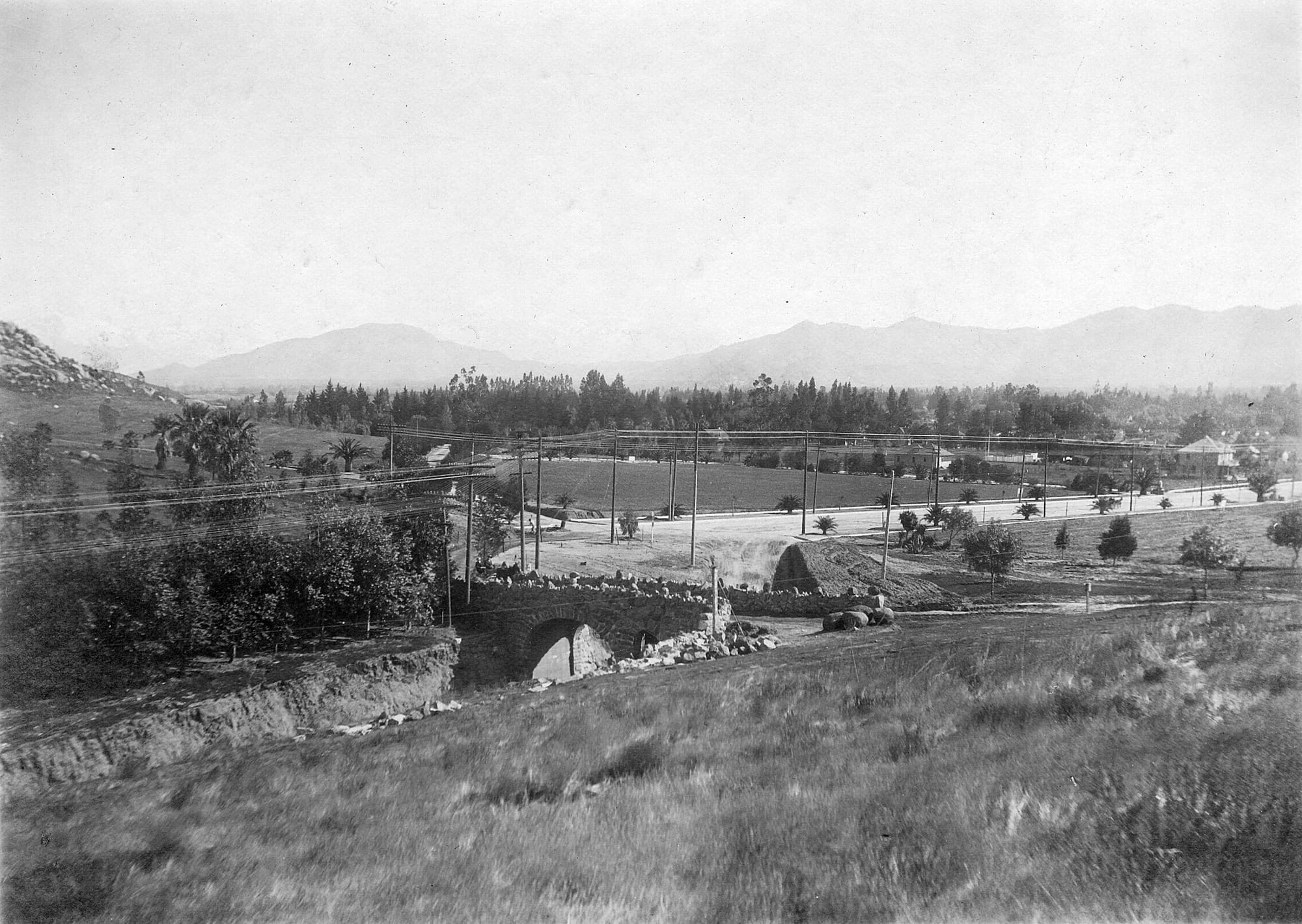
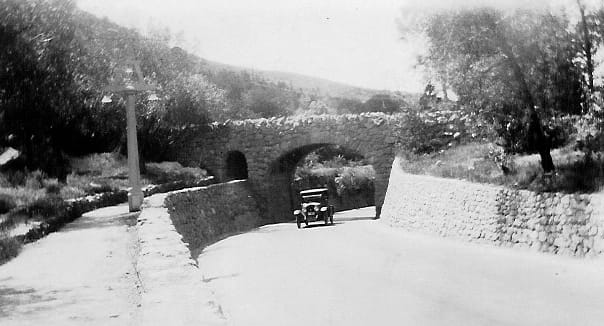
From left to right: [Photo of early Buena Vista Bridge from the base of Mt. Rubidoux, with Loring property on the far side of the bridge and Little Rubidoux at the upper left edge. Seventh Street runs east toward downtown in the middle of the photo (Courtesy of Marjorie Kjellburg Conry), Early photo of a car passing under Buena Vista Bridge. (Courtesy of Nancy Cox)
The early bridge provided a narrow two-lane road on Seventh Street/Buena Vista Avenue and featured a pedestrian path via an arched tunnel on the south side, located at the base of Mt. Rubidoux.
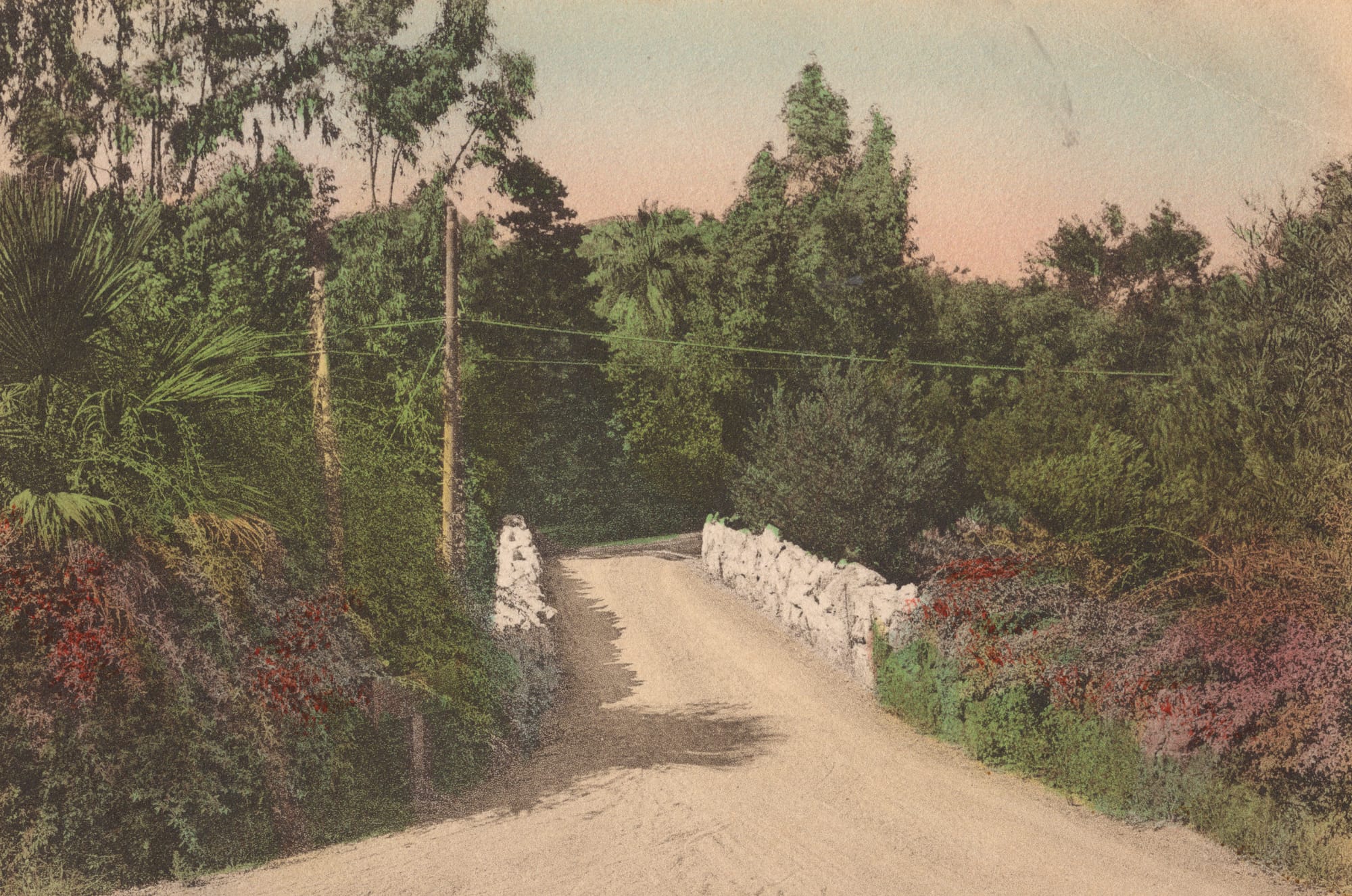
This early Buena Vista Bridge served Riverside for about 25 years. By 1930, the state highway department determined that the 1923-built bridge spanning the Santa Ana River was no longer adequate to handle the traffic, and a new four-lane bridge would be constructed. One source stated that the daily average number of vehicles was 5,948.
At the same time, Frank Miller persuaded the city of Riverside to undertake an elaborate project to beautify and widen the western entrance into Riverside at the base of Mt. Rubidoux. This required replacement of the bridge over Buena Vista Avenue, which had been built in 1907 as part of the original entrance for Huntington Drive to ascend Mt. Rubidoux. The total cost of this project to the city was $60,000, a vast sum in those Depression days.
In keeping with many Depression-era projects, local firms and labor were used. Riversiders J. F. Davidson and Alfred Fulmor made the design. The construction contractor was the Matich Brothers, and the stones were cut from the Bly Brothers and McGillard quarry in the Jurupa Hills (later the Stringfellow quarry). The road was widened, the grade reduced and the curves banked. The work included the installation of terraces supported by ornamental rock retaining walls, pyracantha hedges and Raincross streetlights.
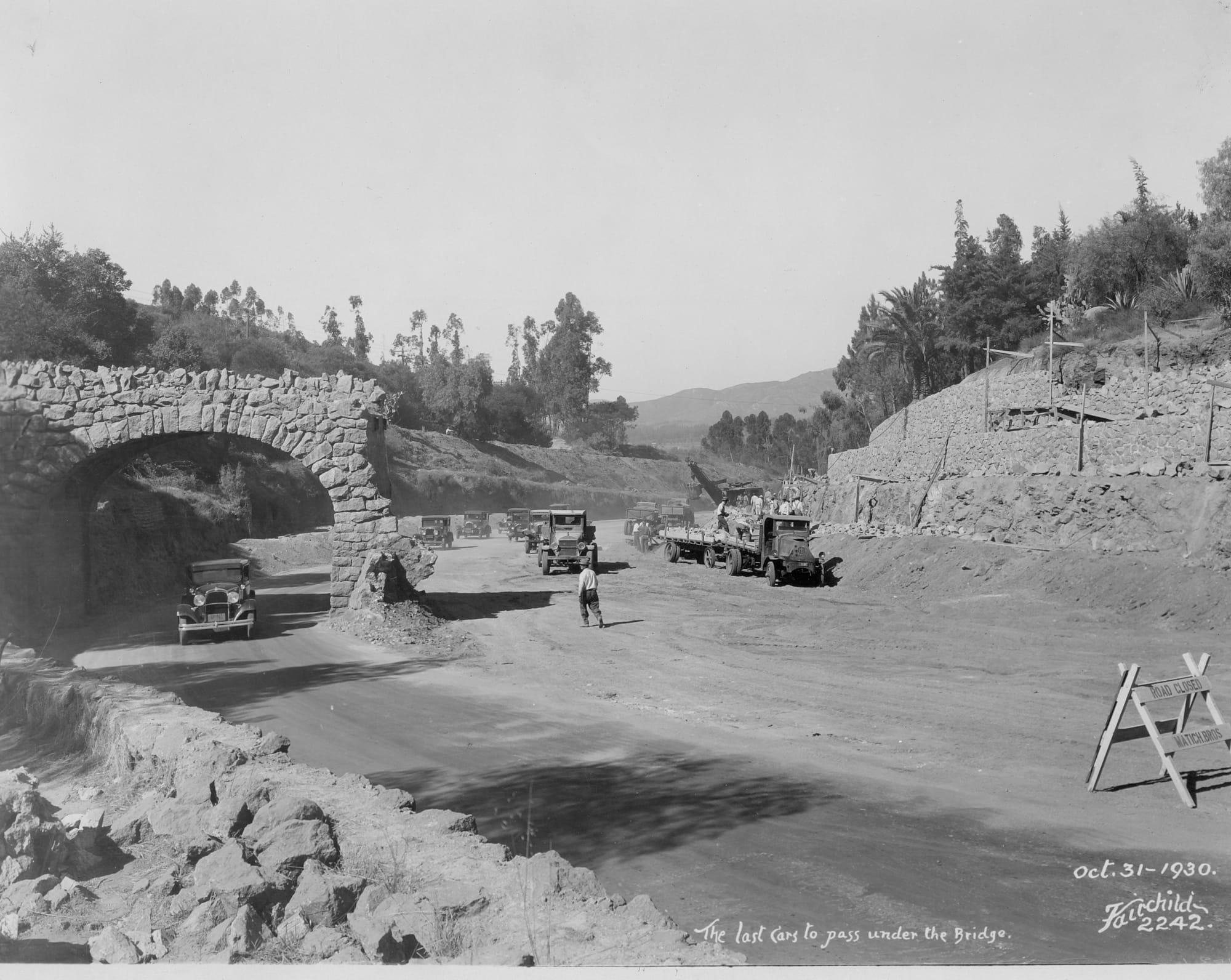
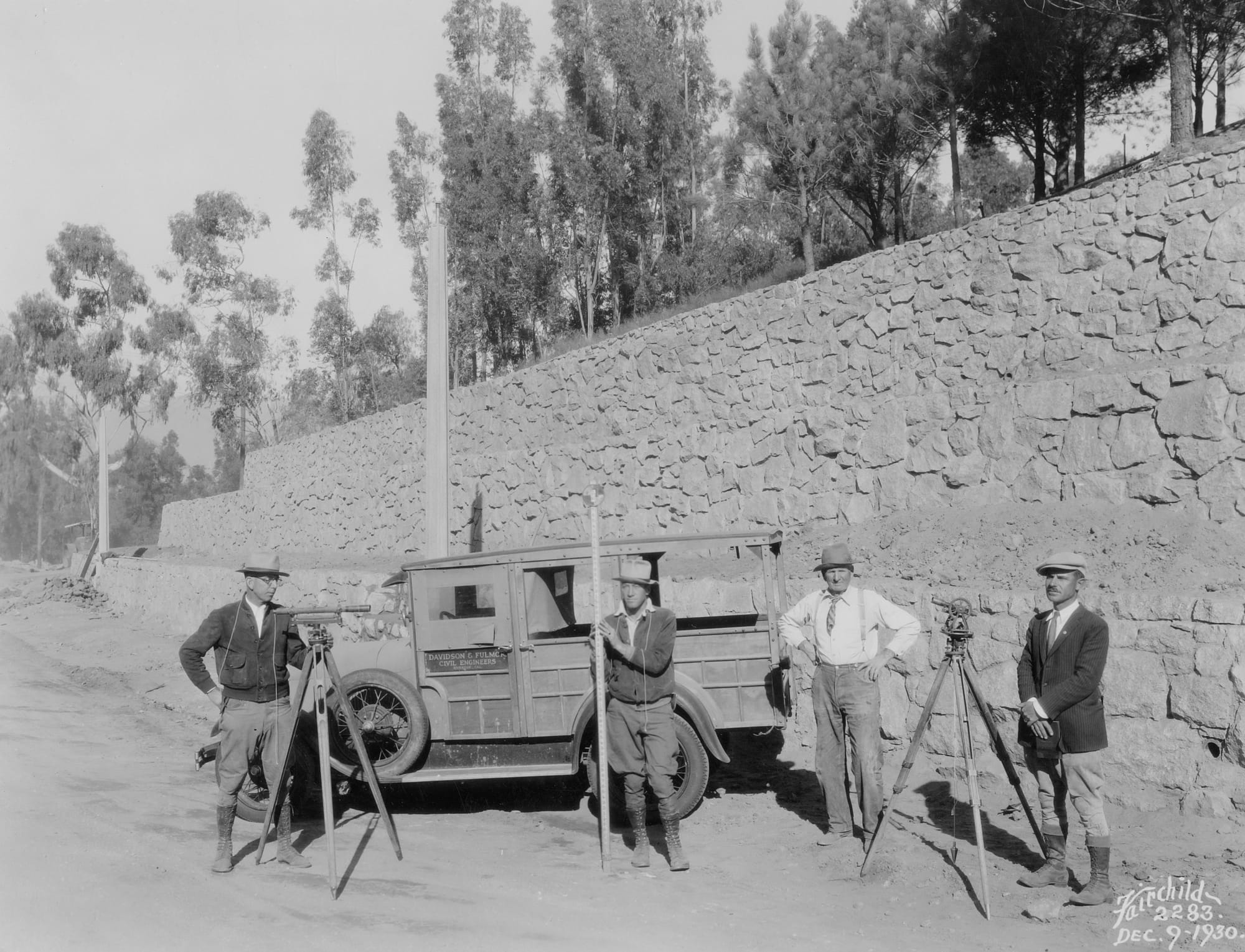
From left to right: The removal of the old Buena Vista Bridge in preparation for the widening of the road, Photo of the Fulmor and Davidson truck. (Courtesy of the Museum of Riverside)
When the work was completed, a special dedication ceremony was held on March 29, 1932, with Gov. James Rolph Jr. officiating. Rolph was quite a character. Reports say he had the bridge reception committee running around in circles for his arrival. Scheduled to arrive by car at 10 a.m., he surprised the committee when he landed at the Riverside airport at 9:22. He flew into Riverside in a Fokker owned by Richfield Oil Co. When the reception committee finally caught up with Rolph, he asked first for a barber shop so he could get “dolled up” for the dedication ceremony. He was also wearing a customary gardenia in the lapel of his coat.
A parade escorted the governor from the corner of Main and Seventh streets to the bridge, where the dedication ceremonies were held. Bands included the March Field Band, the Poly High School Band and R.O.T.C., and the Sherman Institute Band. More than 5,000 people covered the mountainside and the bridge railings to hear the speeches and watch the dedication.
In 1987, the family and friends of John Matich of Matich Brothers nominated the Buena Vista Bridge as a city landmark. The Cultural Heritage Board resolved that “the Buena Vista Bridge be designated Cultural Heritage Board Landmark #74” and that the bridge’s surfaces, including its Hollywood-style light fixtures, are included within this landmark designation. Plaques were placed at both ends of the bridge.
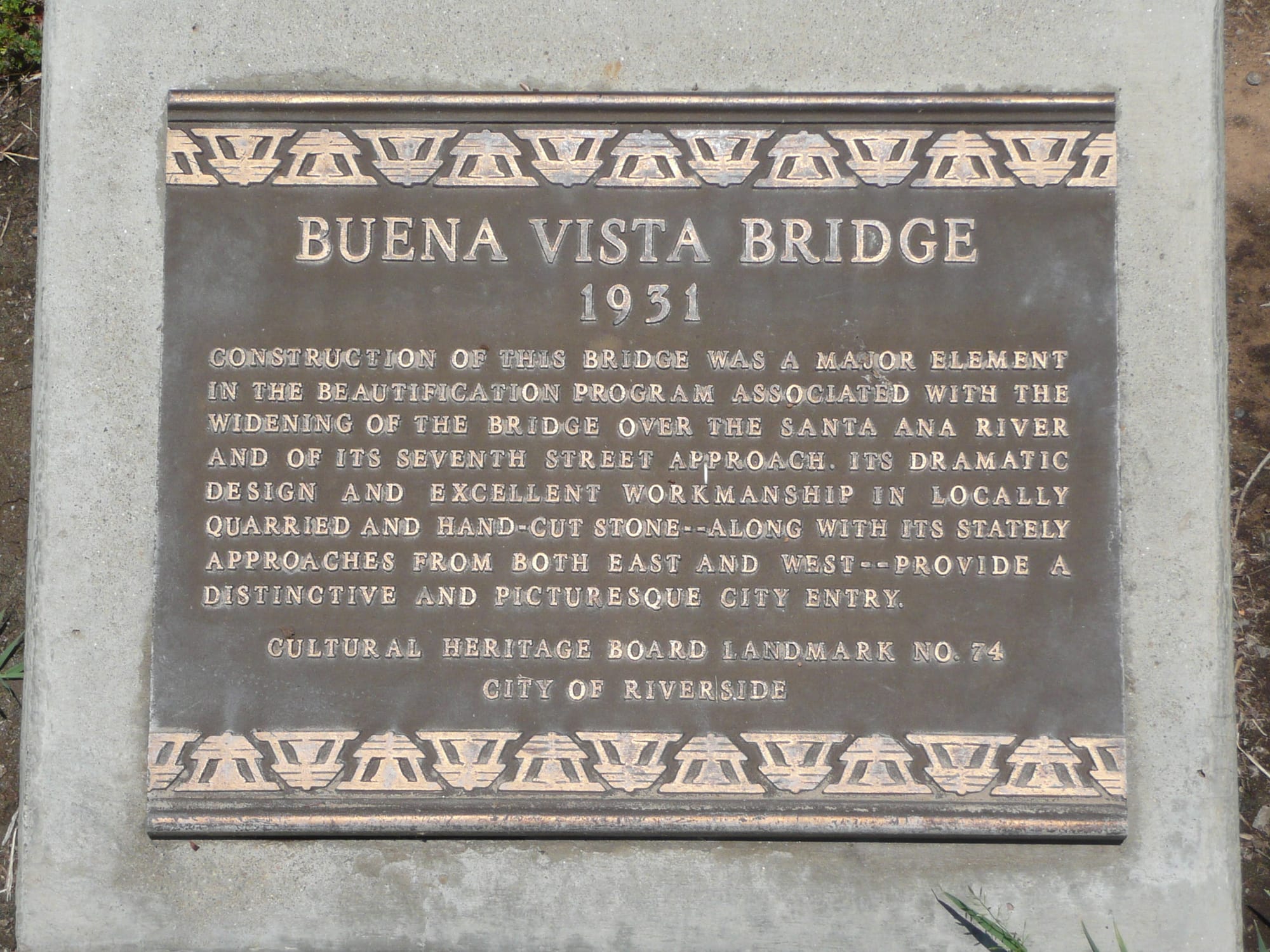
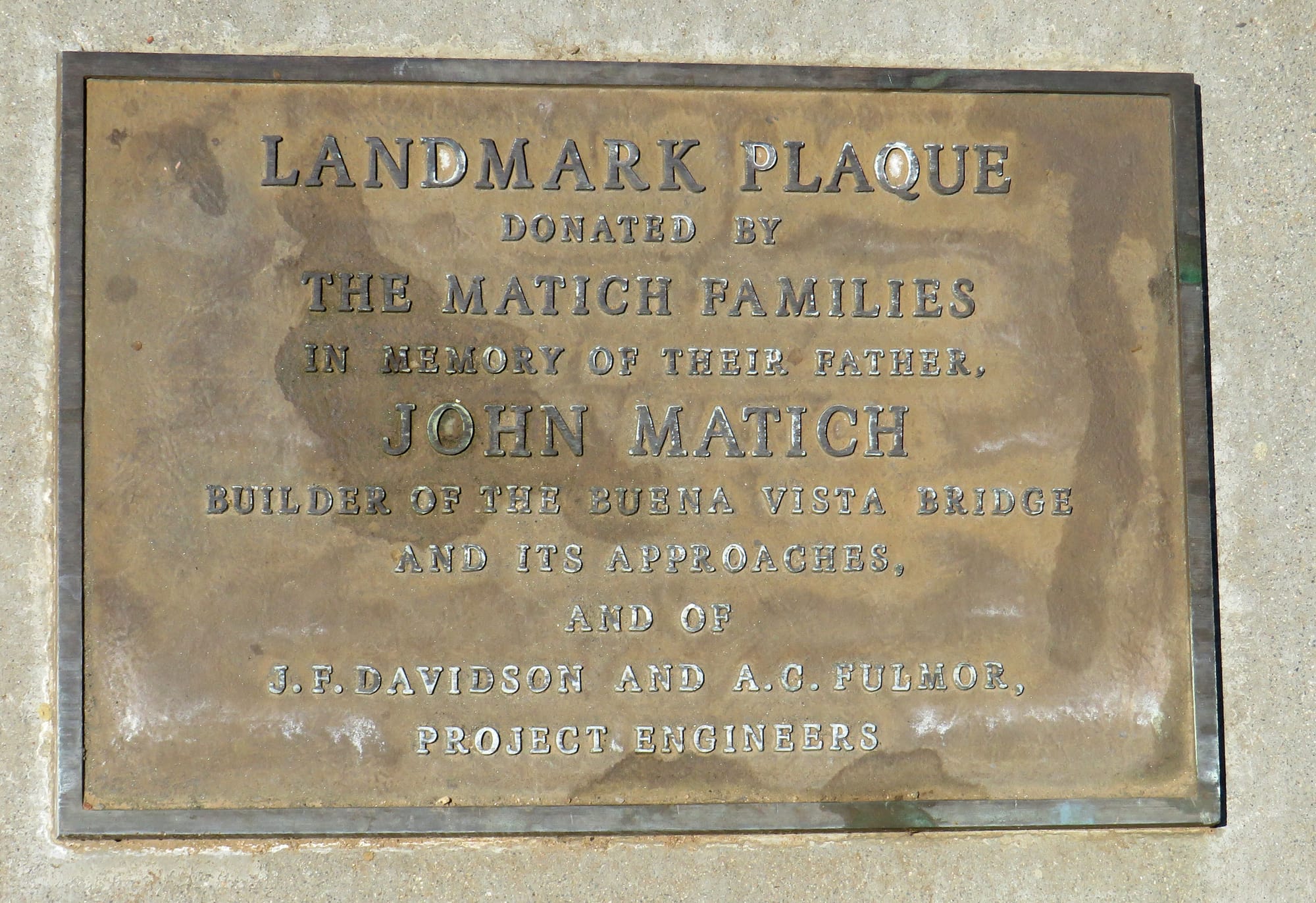
From left to right: Cultural Heritage #74 tablet, Matich family tablet. (Photo by Author)
Today, the Buena Vista (Good View) Bridge still graces the western entrance to the city of Riverside, affording cars a route to approach Mt. Rubidoux. Due to the large number of walkers on the mountain, vehicles are no longer permitted up the road. Yet this early entrance to the park stands as a landmark to Riverside’s past and present.
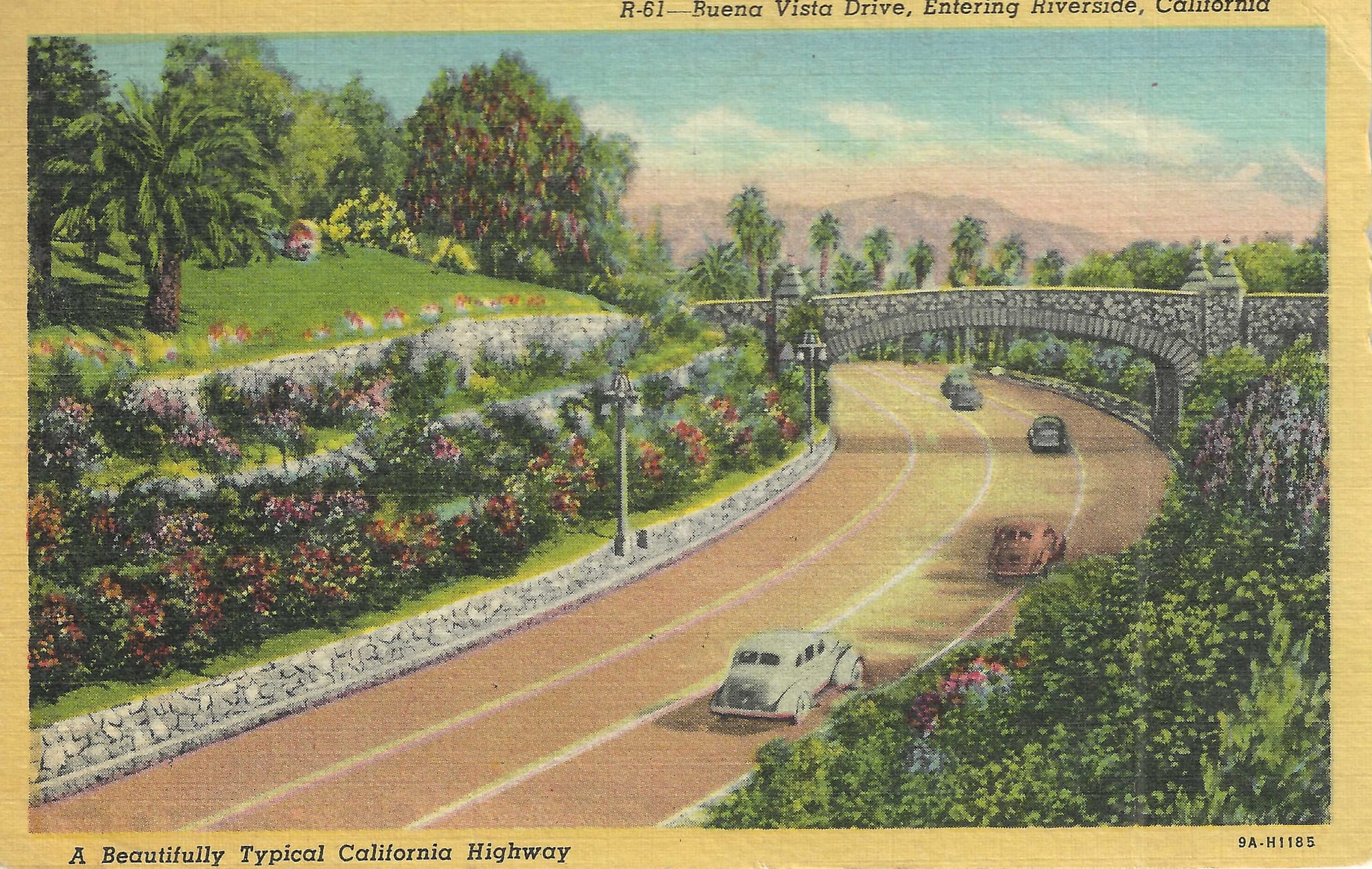
Let us email you Riverside's news and events every morning. For free!